~ 30, part B ~
~ The Study of Threes ~
http://threesology.org
Researchers as of 8/29/2019
| Devil's Advocate Series: | ||||||||
|---|---|---|---|---|---|---|---|---|
| 1 | 2 | 3 | 4 | 5 | 6 | 7 | 8 | 9 |
| 10 | 11 | 12 | 13 | 14A 14B |
15 | 16 | 17 | 18 |
| 19 | 20 | 21 | 22A 22B |
23 | 24 | 25 | 26 | 27 |
| 28 | 29 | 30 A | 30 B | 31 | 32 | 33a | 33b | 33c |
| 34 | 35 | 36 | 37 | 38 | 39 | 40 | 41 A | 41 B |
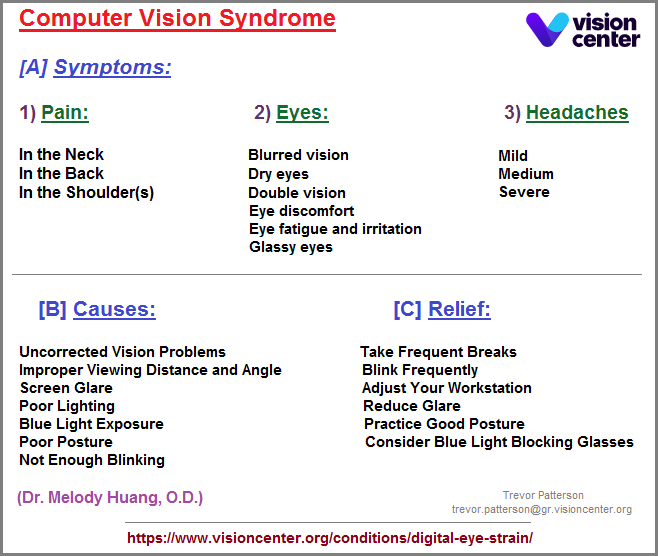
In 2005, a student working in the fluid physicist Yves Couder’s laboratory in Paris discovered by chance that tiny oil droplets bounced when plopped onto the surface of a vibrating oil bath. Moreover, as the droplets bounced, they started to bunny-hop around the liquid’s surface. Couder soon figured out that the droplets were "surfing on their own wave," as he put it — kicking up the wave as they bounced and then getting propelled around by the slanted contours of the wave.
As he watched the surfing droplets, Couder realized that they exactly embodied an early, largely forgotten vision of the quantum world devised by the French physicist Louis de Broglie.
A century ago, de Broglie refused to give up on a classical understanding of reality even as the unsettling outcomes of the first particle experiments suggested to most physicists that reality, at the quantum scale, is not as it seems. The standard "Copenhagen interpretation" of quantum mechanics, originated at that time by the Danish physicist Niels Bohr, broke with the past by declaring that nothing at the quantum scale is "real" until it is observed. Facts on the ground, like particles’ locations, are mere matters of chance, defined by a spread-out probability wave, until the moment of measurement, when the wave mysteriously collapses to a point, the particle hops to, and a single reality sets in. In the 1920s, Bohr persuaded most of his contemporaries to embrace the weirdness of a probabilistic universe, the inherent fuzziness of nature, and the puzzling wave-particle duality of all things.
But some physicists objected, Albert Einstein and de Broglie among them. Einstein doubted that God "plays dice." De Broglie insisted that everything at the quantum scale was perfectly normal and above-board. He devised a version of quantum theory that treated both the wave and the particle aspects of light, electrons and everything else as entirely tangible. His "pilot-wave" theory envisioned concrete particles, always with definite locations, that are guided through space by real pilot waves — much like the waves propelling Couder’s bouncing droplets.
De Broglie couldn't nail down the physical nature of the pilot wave, however, and he struggled to extend his description to more than one particle. At the celebrated 1927 Solvay Conference, a gathering of luminaries to debate the meaning of quantum mechanics, Bohr’s more radical views carried the day.
De Broglie’s pilot-wave vision of the quantum world was little remembered 78 years later, when the Paris droplets started bouncing. Suddenly, Couder and his colleagues had an “analogue system” for experimentally exploring de Broglie’s idea.
Straightaway, they saw the droplets exhibit surprisingly quantum-like behaviors — only traversing certain "quantized" orbits around the center of their liquid baths, for instance, and sometimes randomly jumping between orbits, as electrons do in atoms. There and in bouncing-droplet labs that soon sprang up at the Massachusetts Institute of Technology and elsewhere, droplets were seen to tunnel through barriers and perform other acts previously thought to be uniquely quantum. In reproducing quantum phenomena without any of the mystery, the bouncing-droplet experiments rekindled in some physicists de Broglie’s old dream of a reality at the quantum scale that consists of pilot waves and particles instead of probability waves and conundrums.
Famous Experiment Dooms Alternative to Quantum Weirdness
by Natalie Wolchover, October 11, 2018, Quanta Newsletter)
(Oil droplets guided by "pilot waves" have failed to reproduce the results of the quantum double-slit experiment, crushing a century-old dream that there exists a single, concrete reality.)
Whereas the above article describes an experiment, my own view was without the use of an actual experiment. I played out the three-patterned role of the particle-slit-wave ensemble (a pattern described later on in the above article), in a mind experiment. It is also fortunate that the article provided the comment about Einstein's Quote "God does not play dice (with the Universe)", because we need to question the validity of such a statement in terms of a philosophical approach within the constraints of the present discussion.
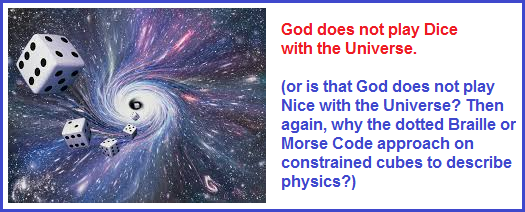
Many people, whether they proclaim an affinity for the concept of a singular creation and guidance god or not appear to be inclined towards accepting some sort of "static-ness" to reality, in that it is assumed atomic particles and associated behavior(s) ("flavorings, colorings... appurtenances of activity and appearance") always occur in the same way. In other words, all particles defined with a given label, exist everywhere with the same size, shape and perform the same behavior without variation. Yet, even if we are unable to measure individualized "personality" differences of particles, such may exist on the supposed-named "quantum level", where the word "quantum" reminds me of a social arena like a household of people or a city, two, etc., of different people; that are defined as being human with human characteristics, but each has its own uniqueness which can be altered by environmental effects such as being alone for a time or being subjected to a quiet or energetic crowd.
The type of "dice" this God may be playing with need not be the square model with colored dots. Using different metaphors one might describe the usage of a "ballpark" figure of activity, functionality and shape to define an active, and not static personality to the different particles being listed. The assumed conveyor-belt manufactured sameness may actually have a rule-of-thumb which allows for variations described as due to the "manufacturing process", because this God is fallible and makes mistakes in writing the software for the overall conveyor belt and manufacturing process, but humanity, in its desensitized awareness of difference, overlooks or labels differences as sameness... that is sometimes referred to as being colored blind in terms of racial skin color distinctions, or by way of developing multi-denominational churches, altering laws to be broader and more accepting of human variation, etc...
... All of which produces a mediocrity of perception that is viewed as being democratic, or open-mindedness, or fair, or reasonable, or temperate, or some other characteristic that leads a person to devoid themselves of being able to discriminate differences, peculiarities, and variations with patterns that might well assist us in extending our knowledge and human capacity for growth... whatever this "growth" may actually mean from now till some distant future time.
Instead of dice, or a ballpark figure of designing "sameness" (where the limitations of the dice define a parameter forcing repetitions to occur... and it is these repetitions humanity has devised a betting scheme for); perceived repetition is labeled sameness and might easily be described with some other form of parameter limitation such as a basketball court, football field, tennis court, courtroom, cloakroom, bedroom, bathroom, interior, exterior, box, shelf, drawer, wallet, purse, column, bowl, cup, pan, menu, etc... Different labels describing limitations for given occurrences of multiple events that are defined singularly, such as a ball team, sports club, gang, legislative body, center, industry, government, religion, etc... Similarly, by labeling we have begun to construct limitations of interpretation that are assigned to atoms, and may be accepted as a validity and thus reinforced for others to believe in if someone like an Einstein claims that a God does not play dice, thereby creating an entire social focus on looking for sameness, but not the absence of sameness, though this too is a pattern.
Here's a youtube presentation of the two competing quantum mechanics theories:
Do we have to accept Quantum weirdness? De Broglie Bohm Pilot Wave Theory explained
In this short animated illustration, the author describes the opening and closing of one and two gates (or slits), which can remind one of the "slits" seen in marbles designated as "cats eyes", or create a reflection of squinched eyes. In any respect the opening and closing of the gates... when coupled to the idea that they are metaphors for the two eyes of humans, which present us with a 3-to-1 ratio of perspectives:
- Perspective with both eyes open.
- Perspective with the left eye open and the right eye closed.
- Perspective with the right eye open and the left eye closed.
- Perspective with both eyes closed.
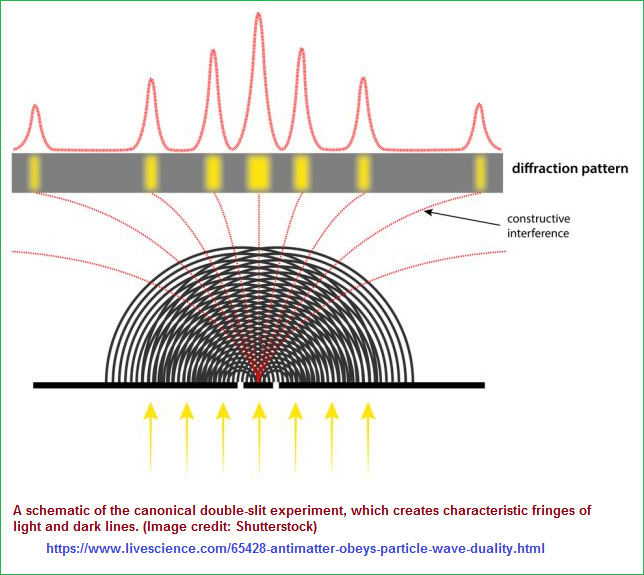
|
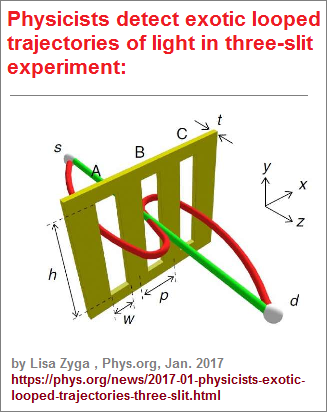 |
While such a catalogue of perspectives is well known, they are not known in the context to which I am providing, nor describing the differences of opinion with respect to the double-slit experiment and double-blind studies. One need only extrapolate from the perspective of vision to that of cognitively described perceptions to the extent that the brains of people can alternate their views as if they are changing which eye is open "or" closed. I emphasize the "or" to elucidate the position in which a person's dominate perspective may not be that which comes from viewing with a particular eye open, but a particular eye closed... including both eyes, as if there is a reliance on their "mind's eye", which may or may not involve an unrecognized preference for one or more other of their senses which have come to dominate due to some measure of compensation which trained them to utilize one (or combination of) perception(s) that come into play in contexts where most or everyone else is utilizing some other perceptual channel. Determining which channel(s) of perception are being used by those who have a preference for a given belief, theory, view, hypothesis, idea, etc., can help to organize an alternative by assimilating their preferred information into seeing it from another perspective and introducing suppositions which they will want to investigate under the pretence of solidifying their views, but actually confronts them with a viable means of addressing issues that requires a reflection that they can claim is of their own making, thus setting the stage for allowing them to make changes to their perspectives.
While a change in perspective appears to be attempted in multiple variations of the double-blind study in terms of quantitative adaptations, we must consider whether such adaptations are actual attempts to address problematic issues, or merely mask the issues with an enumerated costuming approach:
 | |
 |
|
Whereas mention is made of a quadruple variation, there is no mention of any study of greater numbers being used. In other words, we have an example of a cognitive limit being expressed.
The topic of one's "Dominant eye" is well known. Here is a short test to determine which eye is your dominant one:
Dominant eye test: How to find your dominant eye By Gary Heiting, OD
When I did the test I found that the image of the test being displayed on the screen as I watched it, shifted as I alternated opening and closing each eye. In other words, according to the test neither of my eyes is dominant. But this is not true for everyone. If their brain is likewise dominated by one or the other eye's dominance, we have a situation in which you are confronted by someone who may be unable to make the same types and level of distinction as you can. This may lead to conflict or complement. The double-slit experiment appears to be a projection of the eye dominance test being used to "test the vision" of atoms being confronted by a wall from which they are said to bounce and not alternatively smash against or sift through. The atoms represent a metaphorical eye looking outwards beyond its placement in the eye socket of the skull towards any nearby object from which sensory data can pickup returning electromagnetic waves in which to reconstruct into an upside down picture on the back of the brain via the optic nerve that may be frayed or otherwise damaged due to physiological conditions brought on by genetics and/or nutrition, as well as social pressures to accommodate prevailing views.
Instead of a dominant eye test we also have a dominate hand and foot test, such as when noting which hand is being used most often to write with (though an environment created for right-handers forces left-handers to alter preferences such as the placement of buttons, handles, etc...), and which foot is being used to first step off a curb or walk up a staircase. No less, I recall a supposed brain orientation test involving the doodling of a circle drawn in either a clockwise or counter-clockwise motion is the determining factor. Whereas in a manner of speaking, I have been trying to describe a mental orientation by deducing one's dominant usage of patterns-of-two or patterns-of-three, associated to the brain hemispheres, as described in the illustration on pg.10 in this series.
- Dominant Hand: Hand dominance is the preference for using one hand over the other to perform fine and gross motor tasks. This includes activities like writing, cutting, and catching and throwing a ball. The dominant hand is not really a choice because it is not a conscious decision that we make as children. Genetics and the individual's brain play a role in which will be the dominant hand. Understanding a Child's Dominant Hand by Amanda Morin, Updated June 10, 2019
- Dominant eye, hand/arm, foot tests for kids: Test your dominant side.
While the tests for eye, hand/arm, and foot dominance are quite straight forward, when we encounter tests for brain (hemisphere) dominance, they are frequently constructed with a two-patterned bias featuring a selection between two alternatives. It reminds me of overhearing a parental figure ask a child if they have to do number 1 or number 2, so as to make a determination if the situation is as urgent as the child is claiming it to be... yet in reality, the "number 2" (poop) circumstance often involves peeing as well, whereby there should be a third option provided... since so many adults use a three-patterned 1-2-3, or ABC, or on your marks- get set- go, teaching methodology.
Here are some examples of biased brain hemisphere tests, that I am sure the authors would manage to provide what they believe are convincing reasons for justifying their biased two-patterned structure, that the authors appear to be oblivious of:
- Right Brain Left Brain Test, last updated 15 October 2019.
- Brain Dominance test
- Hemisphere Dominance Inventory
As with many two-patterned ideas, we are confronted by perspectives which refute them. The left/right brain idea is called a myth in this article: Left Brain vs. Right Brain Dominance: The Surprising Truth (Understanding the Myth of Left and Right Brain Dominance) by By Kendra Cherry, Updated July 26, 2019. Other perspectives generally adopt a third option of one model or another by claiming that use the brain as an amalgamation, meaning together as a unit or inter-related industry that most often works together like a factory putting out a single product by the efforts of multiple people doing individual tasks but focused on the same purpose of creating a singular product. This may be due to the inclination of either concealing the presence of having no dominant side expressed by a given quality, or enabling one or more others to be satisfied in the mediocrity of their overall brain activity which does not seem to express a dominance in either the left or right hemisphere by way of the frequently sighted attributes. In other words, a person claims that they or others are not dominant in one brain hemisphere expression because their whole brain is taking part (as a mixture), and therefore expresses the truth of brain functioning and not those who want to interpret a particular activity as evidence for some (imagined or real) uniqueness. Here is an article addressing this type of "brain mixture" hypothesis: Are You Left- or Right-Brain Dominant? (Left-brained people are smarter. Right?) by E E Smith, posted Oct 19, 2012. (Note: the author signs their name "E E Smith". I wonder if this is an effort to identify themselves in the same vein of literary recognition given to e.e. Cummings?)
In reflection, one must ask how do we determine if a particular theory, notion, idea, belief, etc., represents one dominant architecture of the body over another? Are theorists using their theories as a projection of a physical attribute of dominance?
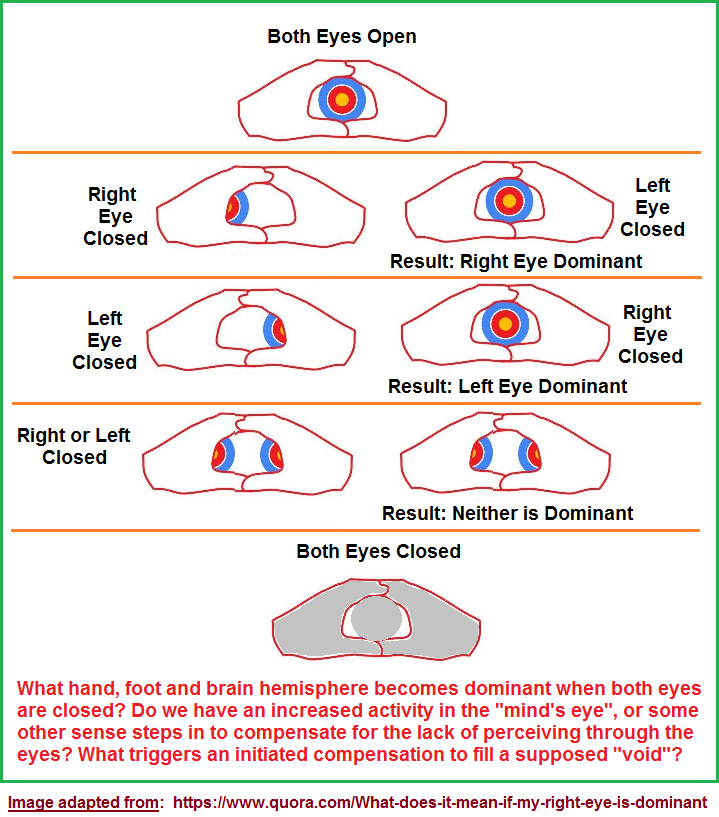
Actually, I have had a problem with the double-slit experiment seen from a different perspective involving a "Threesological" approach of dissecting the underlying patterns which I am inclined to enumerate, and have seen as a projected extension of a human body image. In other words, the double-slit experiment is a projection of the "two" with respect to our two eyes emitting one or multiple separate ideas against a cave wall, producing images (shadows) which come to interfere, like uncommon notions which appear to primitive minds as their experiences are increased along with a developing brain with or without having better access to increased nutrition for an extended period of time, which either brings growth or disintegration in the form of hallucination/illusion/delusion coupled to variations of actual reality. And again, the type of wall and type of particle needs to be considered in the mix of interpretation.
Here is an old image I put together of the double-slit experiment illustrating two eyes:
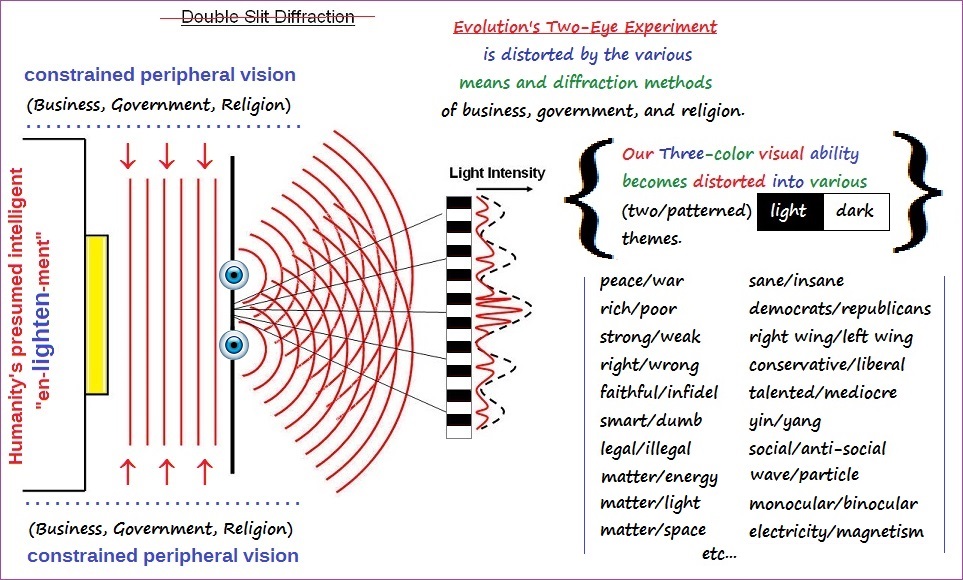
Welcome Fellow Threenkers
Let me provide a view of the adopted standard double-split experiment orientation, noting that like a religious belief held on tightly to, it too is being held in high esteem by high priest-like figures in physics that have many adherents believing in this purported gospel.
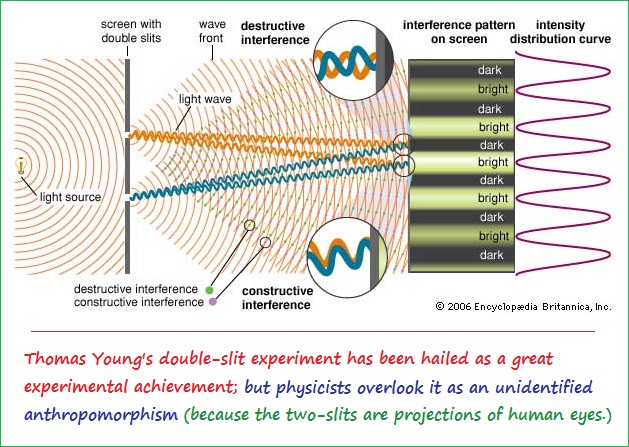
In the following image I have contrasted the two-patterned double-slit experiment with a perspective of seeing the world in a "non-color" black and white orientation, and a perspective which takes advantage of the common three-patterned red-blue-green pigmentation of vision:

The presumed truths of humanity, egotistically thinking that a sentient alien species will most likely have an understanding of our presumed great ideas which we claim are based on basic, fundamental, natural laws which govern the Universe... will be understood. Unless of course they are merely representations of one or another physiological dominance that another sentient species elsewhere does not share and will therefore not view such presume truths with the same level of acceptance humans have indulged in.
I awoke early Wednesday morning by having a poem "pop" into mind that I began to think of and generate. I came up with the idea following the sighting of another's comment contrasting the humorous right and left brains with each other, as I ventured about the internet looking for examples to be used to make reference of the duality by which brain dominance tests are typically offered.
if I may and might, not appear too bold
about that organ called wise and deep,
no greater mystery some say to meet.
Called the human brain, I need to explain
at least the small of what I've found
when from long ago it learned to crawl,
ending up at present at around 3 pound.
If one looks closely to inspect
I expect they'll see in their dissect
a mirror image of that to explain,
from ages old I tell the tale of the brain.
Yet, there's nothing right to the left
and nothing left of the right
which should make one chuckle to this cleft,
such a deep secret no longer be kept.
(2:03 AM, Wed., 10-16-19,
71 degrees, 31 percent humidity
Picture Rocks, Arizona)
[There is nothing right about the left brain and nothing left to the right brain. "To" and "of" can be alternatively inter-changed.]
Note: for the past three days I was able to work on this page via a hit and miss opportunity. I spent Sunday and Monday involved with the replacement of a timing belt, tensioner with spring, idler bearing and water pump on a 1991 Toyota pickup with a V-6 engine. I had heard a rattle in the front end and removed an access cover plate to inspect the tensioner which I suspected was the culprit. While the belt had been replaced 63,000 thousand miles ago according to the written service tag, it did not appear that the tensioner and spring had been, by the looks of the spring which reminded me of a bed spring. Replacing the tensioner and spring alone was about 1/2 to 2/3rds the cost of a complete kit, so I opted to get one for $74.00 with tax, which came out of a distribution center in Phoenix Arizona. I spent an inordinate amount of time hunting down some miscellaneous tools which I did not have readily on hand and had to borrow, along with renting an harmonic balancer puller from an Autozone parts dealer 10 miles away. Most of my tools are locked away in a storage shed while I am traveling about between Six U.S. states (Utah, Colorado, New Mexico, Texas, Arizona, Nevada).
Youtube presentations of the task made it more difficult than it actually was and were highly negligent in discussing some issues such as torque specs for the balancer bolt, replacement of oil cooler line, tensioner adjustment, access to certain bolts, remedies for re tightening the balancer bolt with no access to power equipment or field mechanic's techniques to make do with what is available, etc... Perhaps I should have made a video, but didn't. And let me add that I found it particularly interesting to uncover that the last person who did the belt replacement had advanced the timing by one tooth on the crankshaft sprocket (about 5 degrees) either deliberately to address a power issue for climbing hills, or by accident, which would have been understood by viewing the play in the alignment which I encountered and had considered doing the same thing, but choose the more conservative route instead. The advancement had caused some overheating problems while driving in Arizona which was addressed by removing the thermostat since a low temperature one was not easily located. However, after a bit of realigning the timing to a readjusted engine speed because the idle went down after putting the timing belt in the correct position, all is well.
Origination date: Sunday, October 13th, 2019... 4:36 AM
Initial Posting: Thursday, October 17th, 2019... 5:41 AM
Updated Posting: Saturday, February 18th, 2023... 2:05 PM
Herb O. Buckland
herbobuckland@hotmail.com